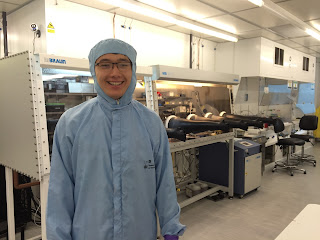Juliet Martin has recently completed her SATROclub extended research placement at St George's Hospital. Juliet was tasked with investigating sudden cardiac death in the young: The sudden death of a young person from a silent cardiac disease is a very tragic event. In most instances the deaths are due to inherited conditions of the heart, therefore evaluation of first degree relatives is recommended. Her project included assessing the experience of these relatives while attending an expert clinic.
Here's what Juliet had to say about her first week at St George's Hospital...
"This week I have arrived at St George's Hospital where I
will be working with another SATRO student and my mentor on a research project
concerning the profiles of the hearts of young sports players.
The best thing about this week has been having the
opportunity to sit in on 'clinic': consultations between cardiac outpatients
and the cardiologists I'm working with. I've been able to observe how the
doctors interact with patients as well as beginning to understand the
process of diagnosis. Each patient that is seen comes with
a completely different set of symptoms, risk factors, history and
lifestyle, so that the two or three hours spent observing is extremely varied
and flies by.
My mentor challenges us to look at the patient's ECG
report and try to identify any abnormalities before he tells us what's already
been flagged up which means that we are much more aware of the
real-life link between what we see on paper and the patient's health. It's been
really exciting beginning to understand and be able to interpret the various
patterns we can see.
This ties in with how we are beginning research for our
project. We have been provided with hundreds of ECG traces, echocardiogram
reports and general health and family history
information from adolescent football players. At this stage, we are
entering all these details into a database for analysis later on.
Alongside the practical experience of clinic, these data
become more significant and comparable and I am beginning to become familiar
with 'normal' readings for the PR interval, QRS duration, QRS axis and various
other pieces of information which made no sense to me when I first arrived.
It's been amazing how much you can learn in a week!
The ultimate interest of our project and the day-to-day
research of my mentor is enlargement of the heart. I have begun to read about
HCM (hypertrophic cardiomyopathy), a disease in which the myocardium becomes
thickened, and the data I've been examining so far as well as some of the
patients I've observed in clinic have demonstrated instances of thickening of
the heart muscle in sports players due to extreme exercise. All the knowledge
I'm gaining is allowing me to develop a keen appreciation for the real
research being undertaken here at St. George's Hospital and to begin to
understand the importance of and motivation for large-scale medical research
projects.
I'm looking forward to beginning to compile our
data and hopefully analysing the trends that come out of it next week. I
also hope to have opportunities to sit in on different types of scan to
see how the results I've been reading are actually generated."
